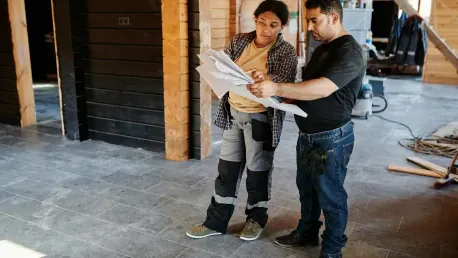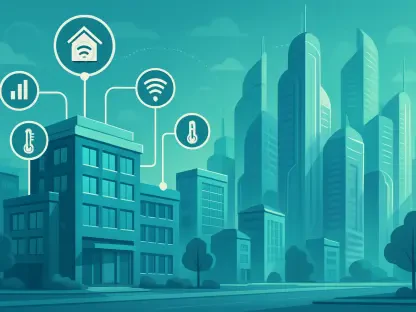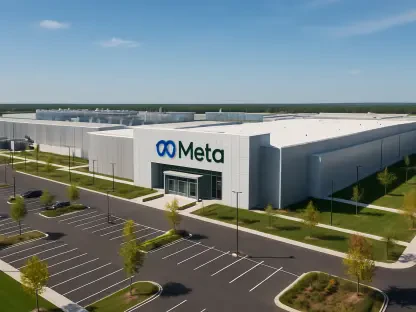Listen to the Article
For decades, the construction industry has been known for its traditional operations approaches and its reluctance to embrace new technologies, often resulting in inefficiencies and project setbacks. This sector has also long been defined by complex logistics, tight budgets, unpredictable variables, project delays, cost overruns, safety issues, and skilled workforce scarcity. On the one hand, traditional practices are helpful and practical in some ways; on the other, they are reaching their limitations in the face of increasingly complex projects and growing demands.
Thankfully, a paradigm shift is underway, driven by innovations like AI, cloud-based collaboration, and automation. The industry is reshaping itself around new and advanced technology. However, many companies still feel intimidated while approaching these new digital processes, scared that the tech will act as a barrier, add an aspect of complexity, or cause unnecessary expense.
This article unpacks the future of construction by examining how these advancements are reshaping building practices, enhancing efficiency, and fostering smarter, more sustainable methods of design, construction, and maintenance.
What is Digital Transformation in Construction?
Digital construction transformation is the strategic implementation of technologies in all aspects of building projects. This entails embracing technologies like cloud platforms, IoT sensors, and 3D modeling software to improve collaboration, automate processes, and enhance project visibility. It’s utilizing technology to manage projects smarter, faster, and more efficiently.
AI and Automation
Artificial intelligent tools are transforming construction project management through enhanced safety, efficiency, and decision-making. The following paragraphs discuss some examples of how this technology benefits project managers:
Leveraging AI-powered computer vision, teams can monitor video and image streams in real time to detect potential hazards, allowing project managers to mitigate safety concerns beforehand. By “teaching” AI algorithms to spot these safety risks, companies can proactively reduce accidents and respond immediately to potential issues.
Delays in the factory and on the construction site are a notorious source of cost overruns and unmet deadlines. They are due to a myriad of causes: weather, supply-chain disruptions, shortages of labor, equipment breakdowns, regulatory problems, and the list goes on. With predictive analytics driven by AI, businesses can foresee these delays long before they occur. Using advanced data-driven approaches, predictive analytics can foresee possible delays—or issues that may cause delays—allowing for proactive prevention and smoother project handovers.
Automation is also improving efficiency—robots lay bricks according to routine, and contract management software powered by AI minimizes administrative burdens, consolidating project processes.
Cloud-based Project Management
Gone are those days of fragmented emails and paper workflows. Cloud-based project management tools, such as Procore and Autodesk Construction Cloud, enable seamless collaboration between project stakeholders.
These tools consolidate all project documents, schedules, and communication in one location, giving real-time access to critical information for on-site or distributed teams. The result? Reduced miscommunication, faster approvals, and smoother project delivery.
Building Information Modeling
Building information modeling technology, is also transforming project preparation by allowing construction practitioners to model buildings digitally prior to excavation. With this kind of tech, an accurate virtual model of a building can be constructed digitally. When completed, the computer-generated model contains precise geometry and relevant data needed to support the construction, fabrication, and procurement activities needed to realize the building.
The 3D models provide a complete overview of all the elements, reducing design errors and enhancing coordination among architects, engineers, and contractors. Building information modeling also enables scenario planning—stakeholders can model different ways of constructing a building in order to identify the most cost-effective and least environmentally invasive methods.
Iot and Wearables, Drones and Robotics
Construction sites are becoming smarter, safer, and more productive thanks to emerging technologies. Taking the lead is the Internet of Things, which embeds sensors onto equipment in order to monitor actual performance and enable predictive maintenance that cuts downtime. IoT sensors also provide continuous streams of data on project status, materials, and equipment, making real-time monitoring and resource planning more effective.
Wearable tech is also improving the safety of workers on project sites. Smart vests and helmets monitor life signs and sense danger, alerting workers before an accident can happen. GPS-enabled wearables are also optimizing labor deployment by improving workforce monitoring across job sites. All of these are creating interconnected networks that transform managing construction projects.
Aerially, drones are revolutionizing site surveying and monitoring of progress. A drone can survey a site in hours rather than days, and the data can be processed much faster. Equipped with high-resolution cameras, GPS technology, and sometimes Light Detection and Ranging systems, they are able to capture pinpoint precision aerial photos that allow managers to monitor projects, assess safety risks, and conduct inspections with unprecedented ease.
In the meantime, robotics is stepping into the breach for mundane work such as excavation and transporting material to reduce the reliance on human labor while improving productivity.
Conclusion
Construction is at the intersection of change and tradition. Cost overruns, inefficiencies, and delays in projects were once the order of the day for decades. But now, technology is changing project management from the ground up and introducing smarter, faster, and safer ways to build.
From predictive analytics ending delays with AI to cloud-based collaboration software that makes communication effortless, digital transformation is not a promise of tomorrow but a reality of today. IoT sensors, robots, and drones are making construction sites more intelligent and more streamlined. Building information modeling technology is enabling teams to design and build with accuracy never before possible. These advancements are not only boosting productivity; they’re revolutionizing building design, construction, and maintenance.
Companies that take on these innovations won’t only optimize their workflows but will also be the pioneers of a more technologically progressive industry of business. The future of construction project management isn’t only digital—it’s dynamic, data-driven, and sustainably designed.
The future of construction is being written in code, automation, and data. The question is: will you be part of the evolution?









